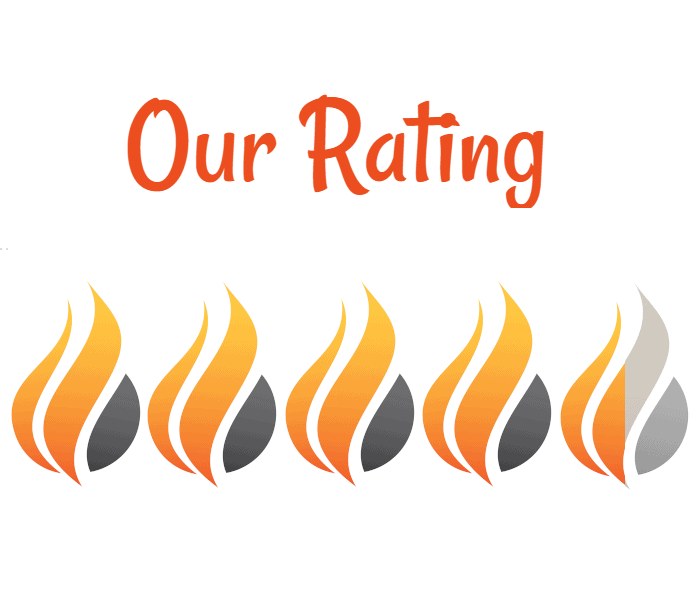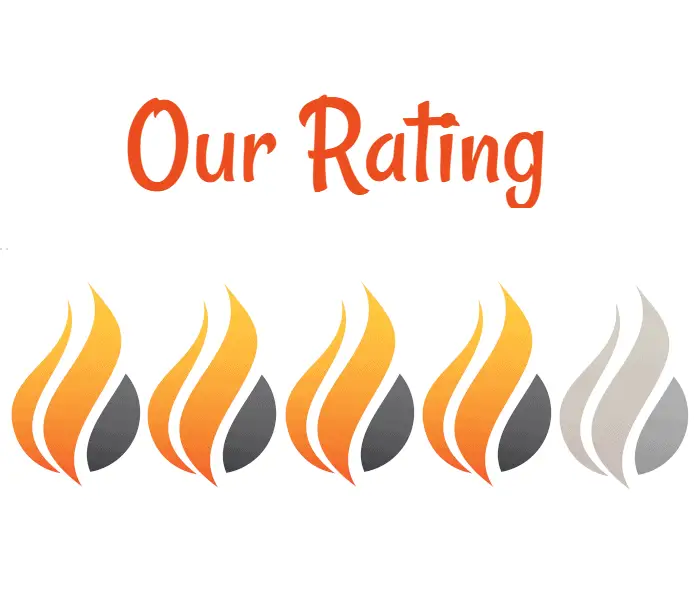Have you ever taken notice of how quickly your Japanese knives blunt or dull? If you’re using the wrong type of cutting board, the knife might not be the problem.
The best cutting board for Japanese knives should be hard enough to withstand the strength of the knife but soft enough that it will absorb some force, and maintain the knife’s edge. If you’re using glass, steel, or marble, you might be causing irreparable damage to your Japanese knives.
It’s time to get rid of your old cutting board and find an elegant, high-quality board that’s designed to take the cut of Japanese knives.
What Kind Of Cutting Board Is Best For Japanese Knives?
End-Grain Wood
Also known as “self-healing wood,” culinary experts praise end-grain wood for its ability to repair itself. When you use an end-grain wood cutting board, simply wipe the surface with a wet cloth to “heal” any scratch marks. The wood swells to remove the appearance of scratch marks and increase the cutting board’s lifespan.
End-grain cutting boards are great for Japanese cutting knives because they’re soft enough that they won’t damage the blade and hard enough to stand up to regular use. The only downside is that an end grain board tends to be more expensive than an edge grain or a bamboo wooden board for example.
Edge-Grain Wood
Edge-grain boards are similar to end-grain cutting boards. The main difference is that edge-grain boards tend to use pieces of various hardwoods glued with the fibers aligned, which overall are much cheaper to manufacture. You’ll pay less money for an edge-grain cutting board, but you also won’t get the same level of quality.
Edge-grain boards have a shorter lifespan, as they don’t “heal” as easily. They’re good for beginners and everyday chefs, but not the best option for a long-term investment. Some edge-grain boards are treated with oils while others are made from bare, unfinished wood.
Bamboo
Bamboo cutting boards are another cost-effective option for people who want something lightweight, and high quality for their Japanese knives without breaking the bank. Like edge-grain boards, they’re not the best option for standard cutting knives, such as a gyuto knife, or Japanese filleting knives for example.
The bamboo surface is hard and stiff, and can more easily damage your blades if you’re too rough. However, the hard surface of these boards will easily withstand any force. You might want to keep a bamboo cutting board in your kitchen for those days when you know you’ll do a lot of chopping or prep work in the kitchen.
Synthetic Rubber
Synthetic rubber is one of the best materials you can possibly buy for your Japanese cutting knife. Rubber is a hard material that stands up to rough chopping, but it’s also soft enough that it won’t dull the blade. Despite the relative softness of this material, you won’t see scratch marks on a rubber cutting board. Unlike wood, rubber cutting boards are water-resistant and stand up to stains and spills.
Synthetic rubber is also a great surface for preparing fish or sushi. So if you are cutting with a Traditional Japanese Yanagiba Knife you can be sure it won’t damage the thin single bevel blade.
Cutting Boards You Should You Avoid Using For Japanese Knives
Plastic And Silicone
If you look for a cheap cutting board at the store, you’ll probably find a board made from plastic or silicone. A plastic cutting board may be cost-effective, but it doesn’t last very long. Every time you use your Japanese cutting knife, you’ll leave scratch marks on the board. The scratch marks can collect bacteria and food particles, creating an unsanitary environment for your ingredients too.
Stone/Glass Cutting Boards
Although a stone, marble, or glass cutting board can look elegant, they are not practical. The tough surface gives absolute resistance, whereas a wooden cutting board would be able to absorb some of the force of the knife. This dulls the blade much more quickly and can cause irreparable damage.
Top 6 Best Cutting Boards For Japanese Knives
Sonder Los Angeles End Grain Walnut Wood Cutting Board
The proudly U.S.A made Sonder Los Angeles cutting board is a fine balance of premium quality and affordability.
A beautifully sleek finish, tough, thick, and durable — all without risking damage to your Japanese knife or cutting board due to the soft, but durable end-grain nature of the wood.
Although the sorting compartments are rather unnecessary and take up about 25% of the board, if you’re utilizing them they’re a great-to-have — particularly if you’re doing a lot of prep!
It’s heavy and tough, so if you plan on storing it frequently you might even end up building some muscle. Although it’s not MASSIVE, it’s certainly a big enough cutting board to hold large meats.
At this quality, this might just be the last cutting board you’ll ever need.
Greener Chef XL Organic Bamboo Cutting Board
Bamboo cutting boards are some of the toughest boards on the market. This cutting board is specially made for Japanese knives, meaning that it can retain its hard surface without dulling the edge of the knife. The board also has a convenient groove around the edge that catches liquids, sauces, stains, and anything else that might otherwise drip onto the table.
This cutting board is made from 100% organic materials–no chemicals or harmful oils that might taint your food. You can place this cutting board over the sink or chop vegetables on your countertop. For extra versatility, you can even turn this board over and use it as a serving tray.
Thirteen Chefs Kiso Japanese Cypress Hinoki Cutting Board
Hinoki wood is popular for Japanese cutting knives. It’s a soft, pliable wood that offers little resistance to the knife. It’s hard enough that you can chop your ingredients with ease, but it won’t make your blade dull over time. Hinoki wood is also known for its pleasant woodsy aroma that makes you look forward to working in the kitchen.
Unlike synthetic board materials, Hinoki wood is renewable and all-natural. This particular board comes from trees in the Kiso region. It’s one of the most environmentally friendly investments that you could make for your dining area.
Shun Hinoki Large Cutting Board
This is another high-quality Hinoki board made from real Japanese cypress. Shun Hinoki cutting boards are made from sustainable, renewable methods that actually help the environment instead of harming it. The wood is soft and gentle, making it perfect for your sharp Japanese cutting knife.
This Japanese cutting board is made from real wood, it adds a fresh, piney scent to your kitchen. You can clean this board with detergent when you’re done cooking for the day. The slim, rectangular shape makes this board easy to store, easy to use, and easy to whip out for last-minute cooking.
Asahigomu Synthetic Rubber Cutting Board
Synthetic rubber offers everything you could want in a cutting board. It’s tough, scratch-resistant, easy to clean, versatile and great for all types of Japanese knives. This particular board is also heat-resistant, so you can slice hot ingredients without worrying about damaging your board.
The only downside is that synthetic rubber isn’t one of the most environmentally friendly materials on the market. If you’re looking for organic materials, you might want to go with a board made from bamboo or Hinoki wood. Otherwise, this board is a great addition to anyone’s kitchen.
Royal Craft Wood Organic Bamboo Chopping Board
This extra-large tray is great for butchering meat, serving charcuterie boards, preparing large dinners and slicing meat with your extra-sharp Japanese cutting knife. The hard, non-porous surface prevents stains, splinters, breakage, and water damage. You can chop meat or vegetables, wash off the surface and use the groove to collect liquid and drippings.
Bamboo cutting boards are typically hard, but this board is just soft enough that it won’t ruin your Japanese knife. It’s one of the most durable boards on the market and fairly affordable for the level of quality that you get. This might be the best cutting board for Japanese knives for your money.
How To Take Care Of Your Chopping Boards
Let The Knife Do The Work
If you are chopping too hard you’ll find that the knife will score the chopping board too deeply. This can prevent the chopping board from expanding back as much, leaving more permanent indents in your chopping board. You don’t need to force the knife down while your chopping or cutting, just keep a firm grip and use moderate force.
Always make sure you use a ceramic honing rod for honing Japanese knives.
Don't Put It In The Dish Washer!
No matter what, whether your using a plastic board, wood board, or rubber board, putting it in the dishwasher is an easy way to have a sad-looking board after no time. Hot water & chemicals more quickly ware, and often warp the board slightly, makes it an eyesore and less useful time after time.
Cut food, don’t cut corners! Use warm soapy water to clean your cutting board, and make sure to dry it thoroughly to keep it performing at its best. A high-quality chopping board can last years and years if you take care of it well.
Store Them Properly
Just like anything, leaving your chopping board in the sunlight, or in damp locations will naturally wear it more quickly than when stored in a dry place out of light. You don’t need to be pedantic, I mean, it is a chopping board, but taking a few easy measures will make a big difference.
Quick Summary
Getting your hands on a high-quality end-grain wood chopping board is the best way to preserve the fine blade of a Japanese knife.
If you’re looking for a top-quality chopping board that won’t damage your Japanese knives and that will stand the test of time, look no further than the Sonder Los Angeles End Grain Cutting board, or even the Shun Hinoki Large Cutting Board.
If you’re looking for quality at an affordable price point, bamboo is the perfect middle ground. The Royal Craft Wood Organic Bamboo Chopping Board will handle the job nicely and sit pretty atop your counter.
Remember, take care of your Japanese knives and they’ll take care of you!










